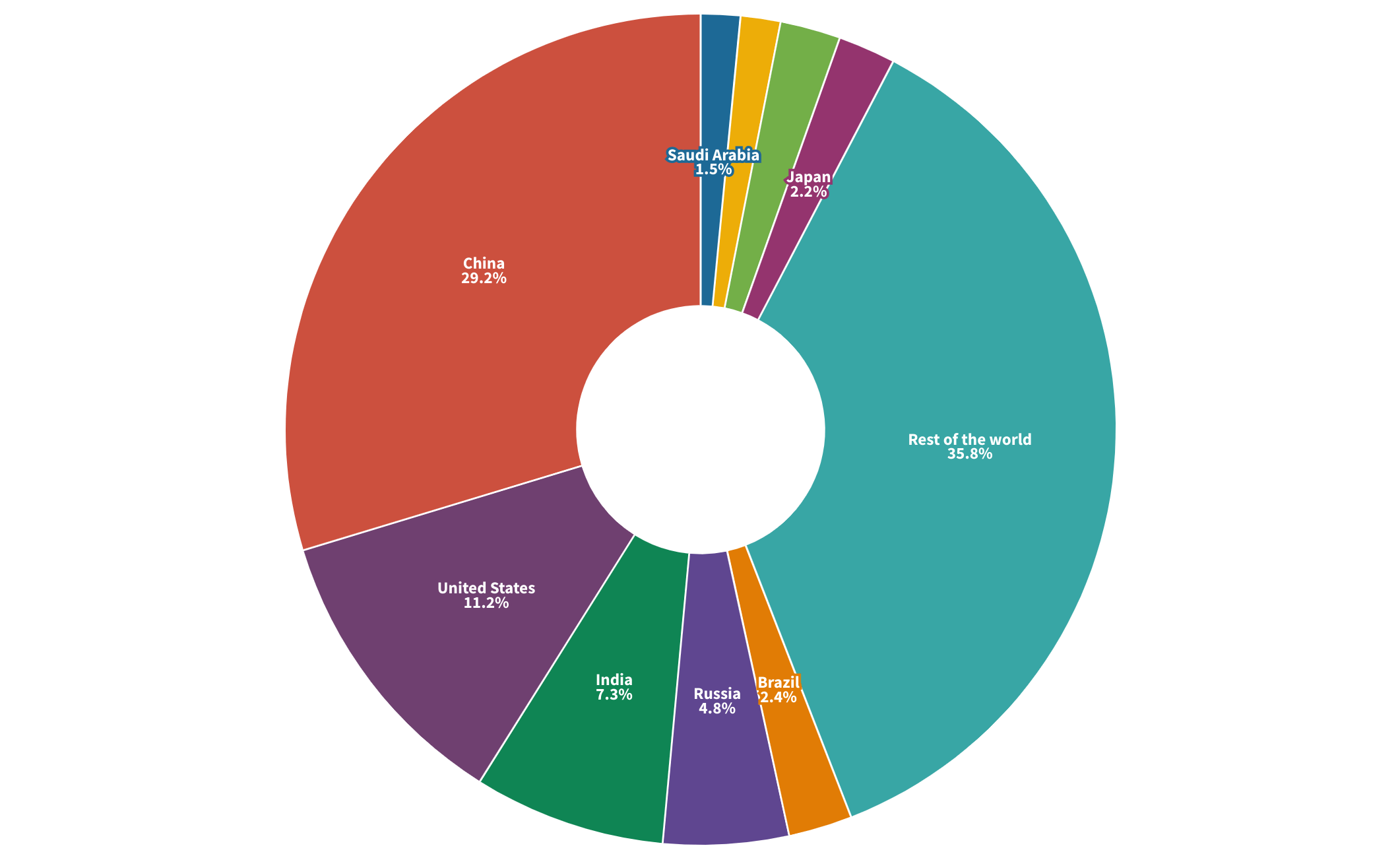Climate and pollution update
Vegan Society of Canada News
November 16th 2023
Several significant developments have occurred since our last climate change update. While none of them on their own warrant a lengthy discussion, this compilation provides a brief summary of four key areas.
Wildfire Emissions in Canada
Almost three years ago, we pointed out the subterfuge used by Canada regarding publishing our emissions under the Paris Accord. The problem is now magnified as we beat our records for acreage burned due to wildfire. When the official reports for 2023 are submitted to the UN, we would not be surprised if the emissions from forest wildfires, referred to as LULUCF, are greater than those from the energy category.
These emissions were already superior to the energy used for all transportation in 2018, and that was a typical wildfire year. While the forest was once a great ally in our fight against pollution, it became our greatest enemy in 2023 due to our foolishness. Not surprisingly, we were greatly unprepared even though we were repeatedly warned, and countless animals died in the process.
GHG Emissions
China, the USA, Russia, and India are often criticized for being responsible for more than 50% of emissions.

Figure 1: GHG emission per country as a percentage. Source: EDGAR
While China is the largest emitter, we have exploited Chinese people for years and they produce a sizable portion of all goods produced on earth. It may be possible to estimate the direct size of most countries' exports, but it would be nearly impossible to estimate all of the GDP that is indirectly tied to exports. In addition, the propagation of the North American consumerism lifestyle to the rest of the world is certainly a factor. So, blindly claiming that climate change is the problem of the top four countries is not as clear-cut as it seems, but what is clear is that we are all interdependent and tackling this problem will require many taking part in the solution.
We had a strong reminder of our global dysfunction recently as the probability of staying below 1.5 degrees Celsius is rapidly approaching zero. The WMO also announced that we have a 66% chance of one year in the next five to breach the 1.5-degree Celsius average. It should be another wake-up call that actions are needed now and the time for words has long since passed.
Oceans Rising, Land Sinking
Part of the issue causing our seemingly never-ending inaction is our propensity to underestimate the effect of climate change. For example, it’s been years since we tried to accurately measure the rate at which the oceans will rise. However, we just realized that we were way off track with regard to how fast we are sinking. One reason is the fact that we use way more water than we anticipated and this in part makes land sink. Of course, the amount the ocean will rise is important, but if we are sinking as fast as the ocean is rising it makes the relative change in height double.
This new research uses interferometric synthetic aperture radar to provide increased accuracy of measurements and found that many coastal areas have a rate of sinking superior to 3 mm per year. Just to give an example of the significance of the change, the difference between some of the official measurements in the IPCC's sixth assessment report and this research is as high as 76.9%, with the average being an underestimation of 23.69%.
It seems we continuously tend to underestimate various impacts of climate change due to various factors such as optimism bias, or perhaps more accurately in our current society, the implications of presenting negative data.
Atlantic Meridional Overturning Circulation
One area where we absolutely cannot afford to underestimate the risk is the Atlantic Meridional Overturning Circulation (AMOC) change. This may be the most important and the most serious tipping point as the changes could be drastic, as much as 5 to 10 degrees Celsius difference in some regions in a few decades. Considering the fact that the difference between an ice age and a non-ice age is about 6 degrees Celsius, the impacts would be significant.
As it seems to be a common occurrence, this new study suggests that we greatly underestimate the timeline as to when the AMOC could collapse. It suggests that it could be as early as 2025, with a median time of 2050 and a 95% confidence interval of 2025 to 2095. The previous consensus of the IPCC was that it would not collapse this century. Clearly, those are some very different estimates. Since this is probably the most serious tipping point potentially having catastrophic impacts, let’s investigate why there is such a wide chasm between the latest IPCC consensus estimate and this new study.
As is often the case in science, the main reason there are such wide views is because of differences in models and assumptions. Some scientists are of the opinion that the uncertainty regarding the stability of the AMOC is too large to make any predictions at all. We are disregarding this group of scientists since, at least in the context of the IPCC, a scientific consensus emerged that the probability of collapse of the AMOC in this century was 10% and not 95%. How could this have happened?
It seems to be due to various issues with the underlying models used in the IPCC. One of the issues is that the models may be biased toward a more stable AMOC due to the fact that a highly stable model would give good results for our current climate and would be retained whereas an unstable model would be rejected. Over time, this creates a pool of AMOC models that are biased toward overstability. Another issue is that the melting of ice into freshwater from glaciers, polar caps and ice sheets is happening much faster than we thought and many models do not properly reflect the statistical probabilities of this new reality.
In comparison, the new study looks at actual data for a region but since we don’t have data that goes back many centuries and for all regions, the new study takes this data and extrapolates it to the entire planet and that is probably the largest problem with it. Nevertheless, from a scientific point of view, the collapse of the AMOC is likely the worst tipping point and most will agree it should be avoided at all costs. It should be of great concern that two ways of analyzing its probability arrive at such a substantial difference.
It seems that the new study is addressing legitimate issues with the IPCC consensus and that it should be taken seriously. The main role of science when it comes to climate change and pollution is to present the data objectively. Objectively, we need considerable and effective action if we want a chance for future generations to live as we have.
Finance
We recognize that finance will play a role in achieving a reduction in pollution and that’s why we have been working on financial products suitable for people who self-identify as vegan for a while. Unfortunately, it seems that efforts by some of the world’s largest asset managers started to wane in 2022. In order of assets under management, the world’s three largest regions for asset managers are the US, Europe and Asia. New research shows that European asset managers continue to lead the way in measures to reduce pollution, but disturbing signs have started to show up in US asset managers with significant changes in their stance on resolutions trying to address pollution.
The extreme climate events of 2023 may indicate that society as we have known it is already gone. But, it is not too late to avoid the worst consequences of pollution and climate change.




